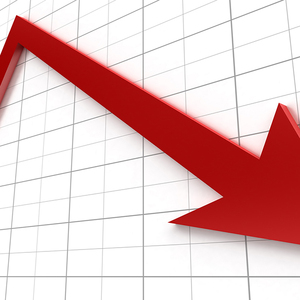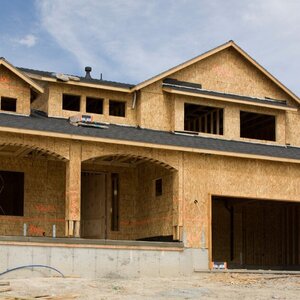The WPJ
THE WORLD PROPERTY JOURNALReal Estate Facts Not Fiction
Residential Real Estate News

U.S. Apartment and Condominium Housing Index Posts Positive Gains in Q2
Residential News » North America Residential News Edition | By Miho Favela | August 28, 2014 10:40 AM ET
The National Association of Home Builders' latest Multifamily Production Index (MPI), an economic indicator for the U.S. multifamily market, posted a gain of five points to a reading of 58 for the second quarter. It is the 10th straight quarter with a reading of 50 or above.
The MPI measures builder and developer sentiment about current conditions in the apartment and condominium market on a scale of 0 to 100. The index and all of its components are scaled so that any number over 50 indicates that more respondents report conditions are improving than report conditions are getting worse. The MPI provides a composite measure of three key elements of the multifamily housing market: construction of market-rate rental units, low-rent units and "for-sale" units, or condominiums.
In the second quarter of 2014, the MPI component tracking builder and developer perceptions of market-rate rental properties had a significant increase of nine points to 68, which is the highest reading since the third quarter of 2012; low-rent units increased four points to 52; and for-sale units rose two points to 56.
"We have seen steady growth for the apartment market since 2011," said W. Dean Henry, chairman of NAHB's Multifamily Leadership Board and CEO of Legacy Partners Residential in Foster City, Calif. "There will continue to be strong demand for the foreseeable future, but the availability of construction labor is still proving to be a challenge."
The Multifamily Vacancy Index (MVI), which measures the multifamily housing industry's perception of vacancies, was essentially unchanged, increasing one point to 38. With the MVI, lower numbers indicate fewer vacancies.
"The MVI, the vacancy index, has been holding steady at a healthy level of 37 to 38 since late 2013," said NAHB Chief Economist David Crowe. "Although this is slightly above the low vacancy numbers we saw in 2011 and 2012, those low numbers were the result of depressed production with few new apartments coming on line. Meanwhile, the strength of the MPI, the production index, in the second quarter is not surprising, given that we've seen employment improve, which allows younger consumers to form their own households."
The MPI and MVI have continued to perform well as leading indicators of U.S. Census figures for multifamily starts and vacancy rates, providing information on likely movement in the Census figures one to three quarters in advance.
Sign Up Free | The WPJ Weekly Newsletter
Relevant real estate news.
Actionable market intelligence.
Right to your inbox every week.
Real Estate Listings Showcase
Related News Stories
Residential Real Estate Headlines
- Orlando's Housing Market Continues to Slow Down This Fall
- U.S. Mortgage Originations Predicted to Hit $1.95 Trillion in 2024
- Construction Input Costs in America Uptick in September
- Global Home Price Growth Further Slows in Mid-2023
- Home Values in U.S. Begin to Slip Late Summer
- Foreclosure Filings in U.S. Spike 34 Percent Annually in Q3
- U.S. Mortgage Credit Availability Upticks in September
- Retail Market is a Bright Spot for Manhattan Real Estate
- Residential Rents in U.S. Dip in September Amid Growing Apartment Supply
- U.S. Mortgage Rates Continue to Surge in October
- Greater Las Vegas Home Sales Down 10 Percent Annually in September
- Most U.S. Homebuyers Say Buying a Home is More Stressful Than Dating in 2023
- Mortgage Applications Dive 6 Percent Last Week in America
- Despite Peak Interest Rates, Global Housing Markets Improved in Q2
- U.S. Architecture Billings Index Reports Softening Business Conditions in August
- U.S. Home Price Growth Pace Upticks Again in August
- 10,000 Residential Properties Have Negative Equity in Hong Kong
- U.S. Pending Home Sales Dropped 7.1 Percent in August
- U.S. Mortgage Rates Reach Highest Level in 23 Years
- American Bankers See Weakening Credit Conditions Through End of 2024
- Palm Beach Area Residential Sales Uptick in August
- Driven by High Mortgage Rates, Pending Home Sales Drop 13% Annually in September
- Miami Area Residential Sales Slip 13 Percent Annually in August
- U.S. Home Sales Dip 15 Percent Annually in August
- Home Flipping Transactions Down in 2023, Profits Up
- U.S. Listings Inventory Rises 4 Percent in August
- The Fed Leaves Rates Alone for Now in September
- Mortgage Applications Uptick in U.S. Amid High Rates
- Single Family Rent Growth in U.S. Drops to 3-Year Low in July
- Greater Orlando Area Home Sales Down 16 Percent Annually in August
- Home Purchase Cancellations Accelerating in the U.S.
- U.S. Construction Input Costs Uptick in August
- U.S. Mortgage Credit Availability Upticks in August
- Monthly Property Foreclosure Activity Upticks in U.S.
- Greater Palm Beach Area Residential Sales Dip 5 Percent Annually in Mid-2023
- NAR Predicts Several U.S. Housing Market Outcomes
- Demand for U.S. Housing is Dropping as Prices Rise
- U.S. Homeowner Equity Decrease by $287 Billion Over the Last 12 Months
- 1 in 5 Millennials Think They'll Never Own a Home in America
- 1 in 8 San Francisco Home Sellers Is Losing Money at Closing in 2023
Reader Poll
Marketplace Links
This website uses cookies to improve user experience. By using our website you consent in accordance with our Cookie Policy. Read More





